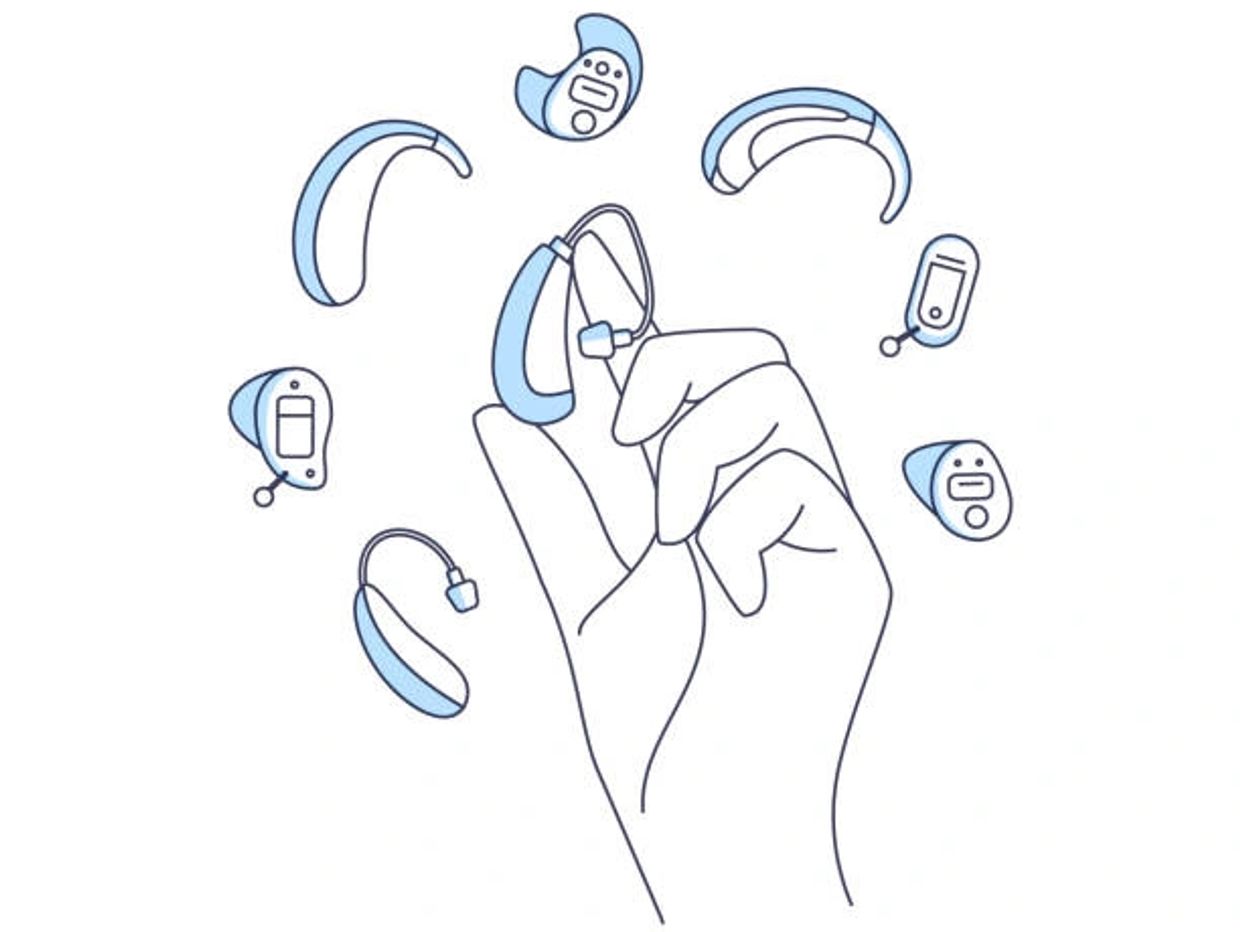817.296.8924 - 208 Sandy lane #B, Fort Worth, 76120

Hearing Aids — Styles/Types
What is a hearing aid?
A hearing aid is a small electronic device designed to amplify and improve the hearing of individuals with hearing loss. It is typically worn in or behind the ear and works by capturing sound from the environment through a microphone, processing that sound using internal electronics, and then delivering the amplified sound to the user's ear through a speaker or receiver.
Key components of a hearing aid include:
Microphone: This component picks up sound from the surroundings, which is then converted into an electrical signal.
Amplifier: The electrical signal is processed and amplified to suit the specific hearing needs of the individual. The level of amplification can be customized by an audiologist or hearing healthcare professional.
Receiver or Speaker: The amplified signal is transmitted to the ear through a speaker or receiver, often located within a custom earmold or within the hearing aid itself.
Battery: Most hearing aids are powered by disposable or rechargeable batteries. Rechargeable hearing aids have become increasingly popular due to their convenience.
Controls: Many modern hearing aids have various controls or settings that can be adjusted to tailor the hearing experience to the individual's preferences and needs.
Hearing aids are available in different styles and sizes, including behind-the-ear (BTE), in-the-ear (ITE), in-the-canal (ITC), and completely-in-the-canal (CIC) devices. The choice of style depends on factors such as the severity of hearing loss, the individual's dexterity, and aesthetic preferences.
Hearing aids can be programmed and adjusted by an audiologist or hearing healthcare professional to match the user's specific hearing loss pattern and needs. They can help people with hearing loss by making speech and other sounds more audible and clear, improving communication, and enhancing the quality of life for individuals with hearing impairments.
Are there different styles of hearing aids?
Yes, there are different styles of hearing aids, and they come in various shapes and sizes to suit different hearing needs, preferences, and levels of hearing loss. Some common styles of hearing aids include:
Behind-the-Ear (BTE): These hearing aids are worn behind or on top of the ear. They consist of a small casing that houses the electronics and a tube or wire that connects to a custom earmold or a dome that fits in the ear canal.
In-the-Ear (ITE): ITE hearing aids are custom-made to fit within the outer portion of the ear. They come in different sizes, including full-shell, half-shell, and in-the-canal (ITC) styles.
In-the-Canal (ITC) and Completely-in-the-Canal (CIC): ITC and CIC hearing aids are smaller and fit partially or completely within the ear canal. They are less visible but may have limited features and battery life due to their small size.
Receiver-in-Canal (RIC) or Receiver-in-the-Ear (RITE): RIC or RITE hearing aids are similar to BTE styles but have a receiver or speaker located inside the ear canal. They are connected to the main device by a thin wire.
Invisible-in-the-Canal (IIC): IIC hearing aids are the smallest and most discreet type. They are custom-fitted deep inside the ear canal, making them nearly invisible when worn.
Behind-the-Ear with a Slim Tube: These are a variation of BTE hearing aids that use a slim, nearly invisible tube instead of a traditional earmold or dome. They are less visible and more comfortable.
Open Fit: Open fit hearing aids are typically small BTE or RIC models that allow for more natural sound to enter the ear, as they don't block the ear canal entirely. They are suitable for mild to moderate hearing loss.
Over-the-Counter (OTC) Hearing Aids: OTC hearing aids are a relatively new category of hearing aids that can be purchased without a prescription. They are designed to be more affordable and accessible, typically in BTE or RIC styles.
The choice of hearing aid style depends on factors such as the type and severity of your hearing loss, your cosmetic preferences, lifestyle, and the advice of your audiologist or hearing healthcare professional. It's important to consult with a professional to determine the most appropriate style and features for your specific needs.
- Hearing Test ?
- Become a Provider
- Need a Provider
- Contact Us
- Privacy policy
- Veterans Discount
- Membership FAQ
- Financing
- Hearing aids expensive?
- How We Hear
- Causes of hearing loss
- OTC Hearing Aids
- Styles of hearing aids?
- Hearing aids affordable
- Hearing Aid Repairs
- Hearing Aid Manufacturers
- Best Hearing Aids
- audiogramist